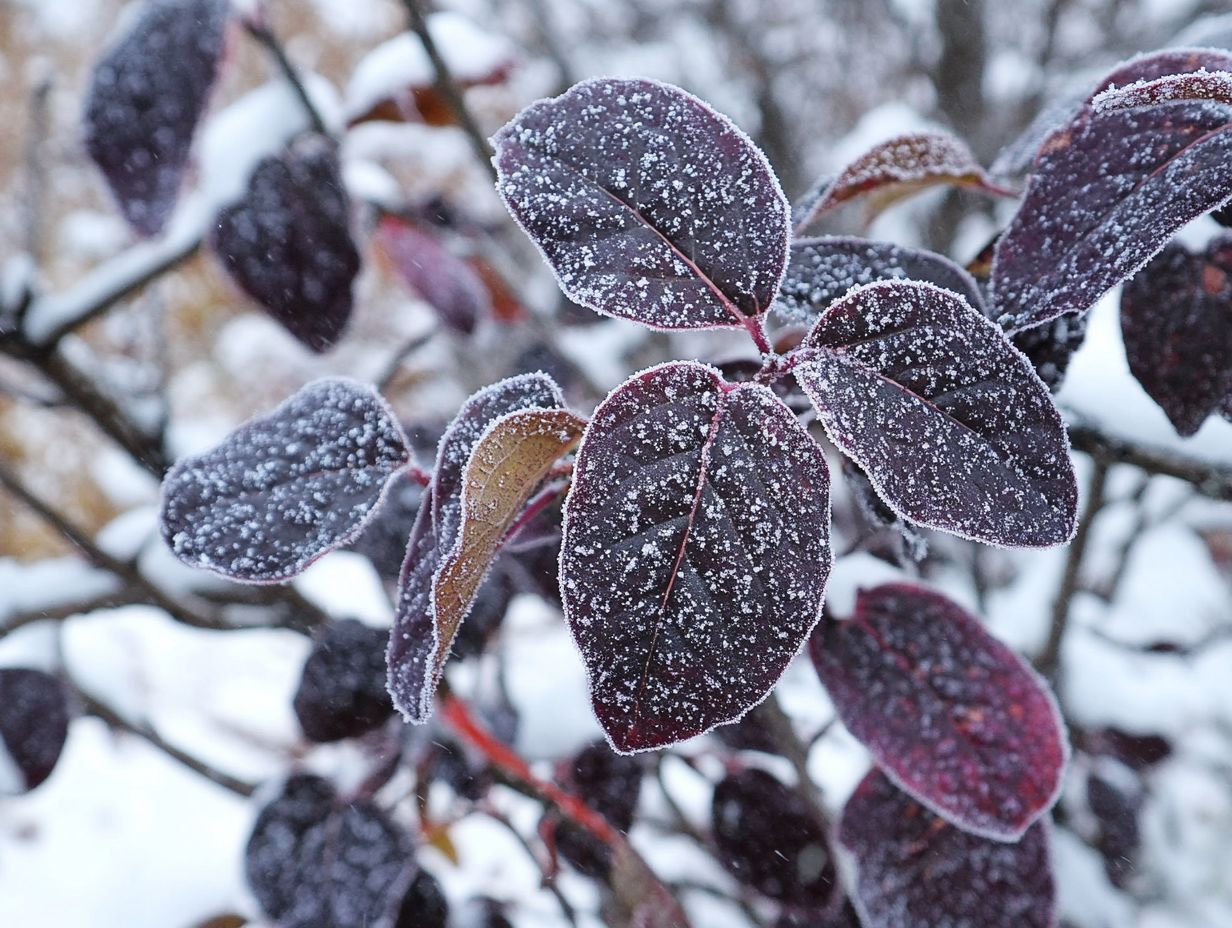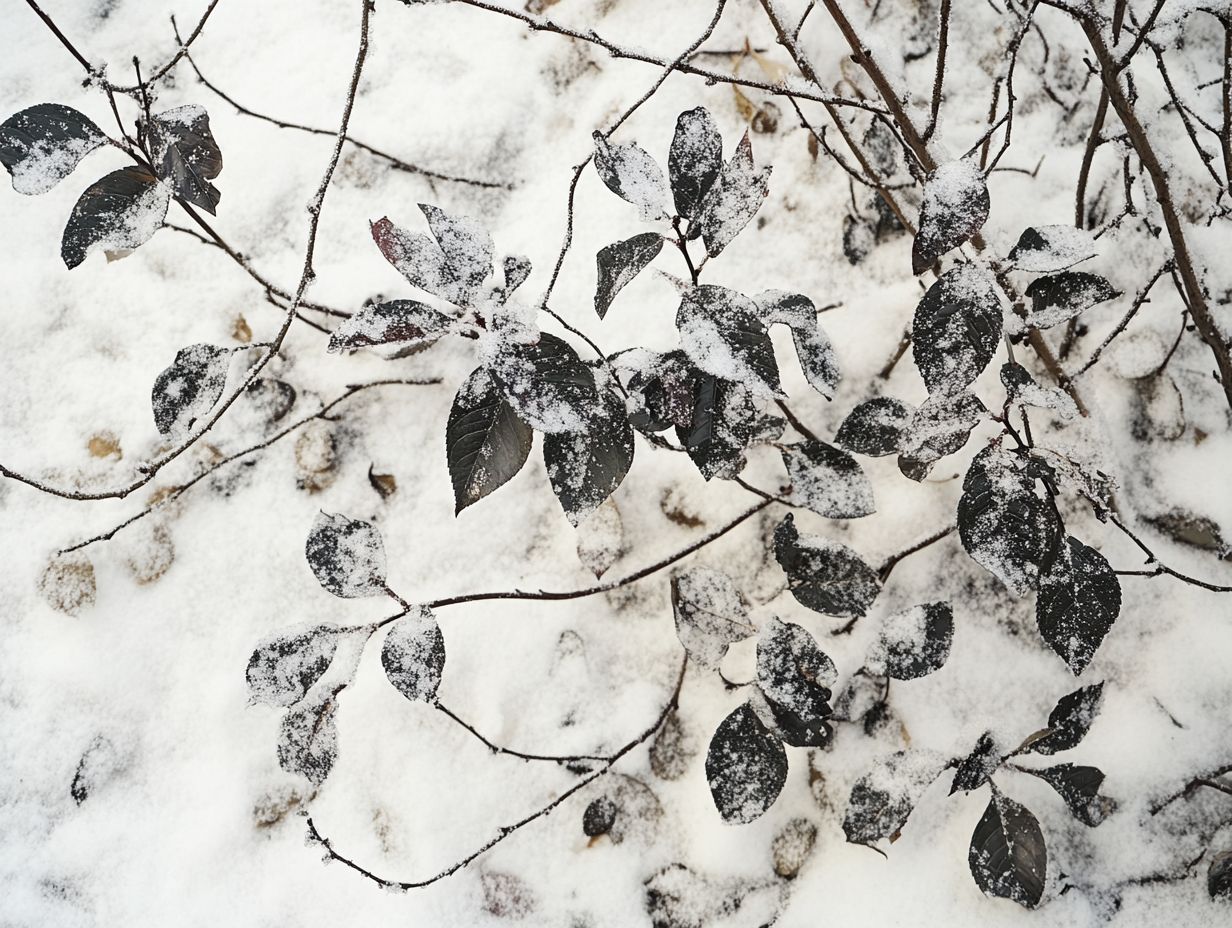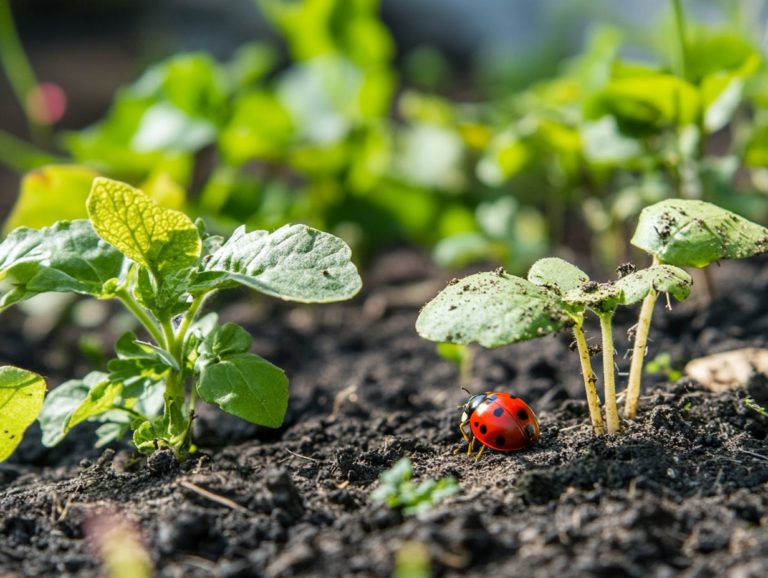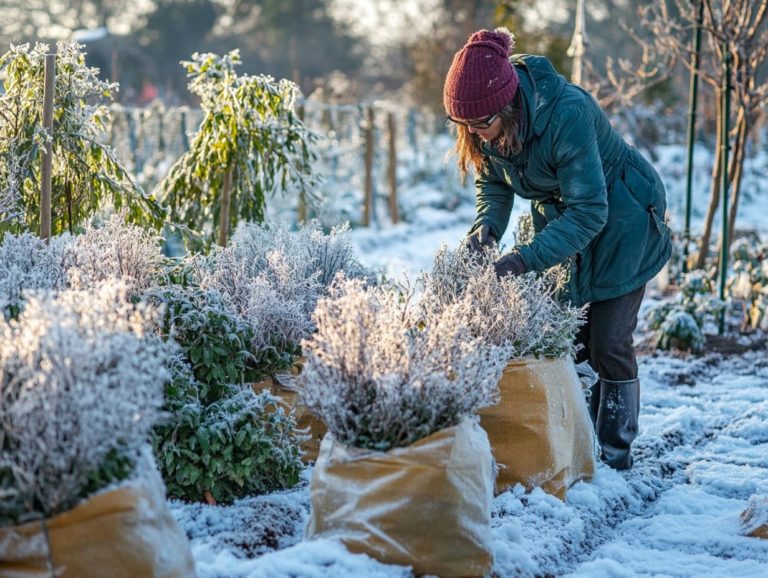How to Identify Fungal Pests in Winter
Winter is here, and it s time to protect your plants! Fungal pests can be sneaky, but with the right knowledge, you can keep your garden thriving.
As winter descends, maintaining the health of your plants can transform into quite the challenge, particularly with the looming threat of fungal pests.
These unwelcome intruders can damage your garden, making early recognition essential for safeguarding your beloved plants. This guide delves into the common types of fungal pests that appear during winter, along with tips on how to identify their telltale signs and effective strategies for both prevention and treatment.
Prepare to arm yourself with the knowledge necessary to ensure your plants not only survive but thrive throughout the season.
Contents
Key Takeaways:

- Look out for common fungal pests in winter, such as powdery mildew and gray mold, which can damage plants and spread quickly.
- Identify pest infestations by observing signs like discoloration, wilting, and distorted growth on plants.
- Prevent and treat fungal pests with effective strategies like proper sanitation, pruning, and using natural remedies like neem oil and baking soda. Maintain healthy plants in winter by providing adequate light, air circulation, and watering only when necessary.
What are Fungal Pests?
Fungal pests are harmful organisms that can seriously affect your plants’ health. They thrive in damp, cool conditions and can lead to diseases caused by bacteria and viruses, such as powdery mildew, downy mildew, and snow mold. These pests detract from both the beauty and vitality of your plants.
Understanding these pests is crucial for effective control and treatment, particularly during the winter months.
Common Types of Fungal Pests in Winter
During winter, you face significant threats to your houseplants from various fungal pests, including notorious culprits like snow mold, powdery mildew, and downy mildew. These pests thrive in the cooler, damp conditions that dominate the season. If not managed properly, they can wreak havoc in your greenhouse or garden.
Recognizing these common winter pests is essential for maintaining the health of your plants and protecting your garden from winter pests to prevent disease outbreaks.
Identifying and Differentiating Between Pests
Identifying and distinguishing between the various types of fungal pests is crucial for effective management and treatment, especially for your houseplants, where visual indicators can vary significantly. Common signs to watch for include leaf discoloration, wilting, and sticky residue. These can signal an infestation of mealybugs, aphids, or whiteflies rather than solely indicating fungal infections. Accurate identification allows you to choose the right control measures to protect your plants’ health.
Don’t overlook other symptoms. Webbing is a telltale sign of spider mites, while fur-like growths may hint at powdery mildew. Pay attention to the undersides of leaves as well; that’s where scale insects like to hide, often appearing as small, waxy bumps. Regular monitoring of these areas is essential.
Examine the integrity of stems and the health of roots to differentiate between fungal issues and those caused by insects. For instance, root aphids might stunt your plant’s growth, while fungal diseases like root rot present a different array of symptoms. By understanding these differences, you empower yourself to take timely and effective action in maintaining the vitality of your plants.
Signs of Fungal Pest Infestation

Recognizing the signs of fungal pest infestation is essential for effective intervention, especially with houseplants that can swiftly fall victim to diseases like powdery mildew and downy mildew.
Common visual indicators include white spots, wilting leaves, discoloration, and mold growth. Each one signals that your plants may be in trouble and require immediate attention.
By remaining vigilant and closely monitoring these signs, you can implement effective control strategies to safeguard your cherished plants. Stay alert and take action now to protect your plants this winter!
Visual Indicators and Effects on Plants
The visual signs of fungal pests vary widely. Each type presents unique symptoms on your plants. You might encounter powdery mildew, downy mildew, or snow mould, each affecting plant health in distinct ways. Symptoms like leaf curling, discoloration, and excessive mold growth not only mar the appearance of your houseplants but can also contribute to a decline in their overall vitality.
Beyond these immediate indicators, fungal infections can compromise a plant’s ability to photosynthesize (the process plants use to turn sunlight into energy), ultimately stunting its growth and resilience. For example, if you find powdery mildew, you’ll likely see a dusty white coating on the leaves a clear signal that intervention is urgently needed.
Incorporating these observations into your care routine is essential. Early detection enables you to implement more effective treatments, such as tweaking your watering habits or enhancing air circulation. This proactive approach doesn t just resolve current infestations; it also fortifies the long-term health of your plants, making them less vulnerable to future fungal threats.
Preventing and Treating Fungal Pest Infestations
Preventing and treating fungal pest infestations demands a proactive stance, especially in greenhouses and among your cherished house plants, where conditions can rapidly encourage their proliferation.
You can employ effective strategies such as:
- using tiny worms that can help control pests
- deploying sticky traps
- utilizing natural remedies like garlic smoke
to deter pests and safeguard your plants against diseases like powdery mildew and snow mould. By adopting these methods, you can cultivate a thriving environment that promotes growth and vitality in your green space.
Next, let s explore effective strategies for pest control.
Effective Strategies for Control and Eradication
Employing effective strategies for controlling and eradicating fungal pests is essential for maintaining the health of your plants. You have a variety of methods at your disposal, including yellow sticky traps, beneficial insects, and products like dragonfli plant soap. These tools can effectively target pests such as mealybugs and aphids, helping to manage infestations while promoting a balanced ecosystem in your greenhouse or garden.
Using sticky traps captures flying pests. Integrating beneficial insects like ladybugs and lacewings provides a natural form of pest control. These helpful critters prey on common nuisances without causing harm to your plants.
Targeted treatments, such as organic fungicides and insecticidal soaps, offer further solutions for tackling stubborn infestations. By regularly monitoring your plants and employing these diverse techniques, you can not only eliminate fungal pests but also cultivate a healthy environment for your plants to thrive, ensuring a vibrant and flourishing garden or greenhouse.
Best Practices for Winter Plant Care

Let s dive into the best practices for winter plant care to keep your houseplants thriving! Implementing these practices is crucial for ensuring the health and vitality of your houseplants while minimizing the risks associated with winter pests and common lawn diseases.
Strategies like maintaining optimal humidity levels, employing beneficial insects for pest control, and providing adequate protection in your greenhouse can greatly enhance your plants’ resilience during the colder months.
These practices not only safeguard your plants but also create a flourishing environment that encourages growth and development.
Tips for Maintaining Healthy Plants During Winter
To keep your plants thriving through the winter, embracing smart winter care tips is essential. This is especially important for safeguarding against pesky insect pests and common lawn diseases that could jeopardize their vitality.
Simple yet effective tips include establishing proper watering schedules and utilizing greenhouse protection methods. Stay vigilant for any signs of disease to ensure your plants remain healthy during the colder months. These practices are vital for sustaining plant life and bolstering their resilience against winter challenges.
One of the most crucial aspects is modifying your watering habits, as your plants will generally need less moisture when the temperature drops. Regularly check the soil’s moisture level make sure it doesn t dry out completely, but also avoid overwatering, which can lead to root rot (when the roots stay too wet and begin to decay).
Building cold frames is a fantastic way to protect your delicate plants from harsh winds and freezing temperatures. By closely monitoring your plants for any signs of pest activity or disease symptoms, such as discoloration or wilting, you can take prompt action, significantly increasing their chances of making it through winter unscathed.
Remember, a little diligence now sets the stage for vibrant growth when spring arrives.
Frequently Asked Questions
What are fungal pests and why are they a concern in winter?
Fungal pests are types of fungi that can damage plants and crops during the winter season. These pests can weaken plants, reduce crop yields, and make them more susceptible to other diseases. They are a concern in winter because cold and wet conditions create a favorable environment for fungal growth. To effectively combat this issue, consider preventing indoor pests during winter.
How can I identify fungal pests in winter?
There are a few key ways to identify fungal pests in winter. Look for signs of wilting leaves, discoloration or spotting on leaves, and abnormal growth patterns on plants. For more detailed guidance, check out how to identify pests in cold-weather crops. You may also notice powdery or fuzzy substances on the leaves or stems of plants.
What are some common types of fungal pests found in winter?
Some common types of fungal pests found in winter include powdery mildew, gray mold, and downy mildew. To manage these issues effectively, it’s also important to consider identifying beneficial insects in winter, as they can help protect a variety of plants, including vegetables, fruits, and ornamental plants.
Can fungal pests be prevented in winter?
Yes, you can take steps to prevent fungal pests in winter. Such practices include cleaning plants regularly and not watering from above. You can also use disease-resistant plants to help avoid fungal infestations.
How do I treat fungal pest infestations in winter?
If you notice signs of fungal pests on your plants in winter, act fast! Prune and remove any infected plant parts, and apply fungicides as directed. Additionally, identifying common winter plant diseases may help you adjust watering and humidity levels to create a less favorable environment for fungal growth.
Are fungal pests harmful to humans?
In most cases, fungal pests are not harmful to humans. However, some types of fungal pests can cause respiratory issues or allergic reactions in individuals with compromised immune systems. To be safe, always wear gloves and protective gear when handling plants affected by fungal pests.






